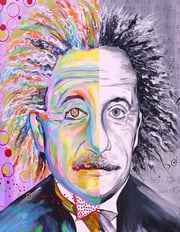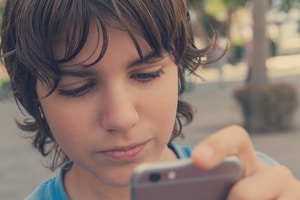Art is a Science: Using Science to Nurture Your Child’s Talents
The greatest of greats have always emphasized the importance of art in society. In the words of Albert Einstein, “The greatest scientists are artists as well.” Children with an inclination towards the arts are, definitely, gifted. However, this talent must be nurtured for them to become the artist they dream to be.
Before digging deeper into the ways science can help children become the best artistic version of themselves, let’s throw light on the closest relationship that science and arts share!
Dave Featherstone, Professor of Biology and Neuroscience, believes that science and art are the same things. He wrote on Quora, “Both science and art are human attempts to understand and describe the world around us.”
While he granted that their traditions, approaches, and intended audience might differ, he also argued that the motivation and goals of both science and arts are fundamentally the same.
Once you understand this, it’s easy to see why opting to develop art with a scientific approach must is an ideal choice in parenting!
So let’s discuss how the study of science is essential in not just developing a growth mindset towards a better career, but also help your kids learn develop latent talents that might make them successful in sports, arts, or any vocation of their choosing. Here are five such “talents” that are nurtured as a result of studying science and technology.
Creativity
Both science and art observe, explore, and create. Science helps kids to ask questions, observe more, and therefore get better at their pursuits.
Encourage your child to make observations from any activity they engage in and then record them by writing them down, drawing a picture, taking a photo, or making an audio or video recording. Your children, via science, learn to compare and contrast things and use them better in other activities such as music, painting, and storytelling.
Science doesn’t follow one method to discover results. In fact, many discoveries have happened by accident. This effect falls out into other fields as well. For example, great novelists hardly ever have defined templates to write stories. They use their life experiences and knowledge to create masterpieces.
Another great example where art projects are based on science is activities such as crafts, woodworking, knitting, etc. where measurements are important. This is where the intersection of math and art also comes into play. Without the knowledge of machines and calculations, creating those pretty crafts can be quite a task.
Once they ingrain these concepts (even if you haven’t explicitly taught them), your children won’t shy away from trying out new methods of creation – and more importantly not quit after a few tries.
Planning
Science is a systematic subject that allows kids to learn organization, scheduling, and estimation like nothing else. For most goal-oriented activities that kids undertake – whether in the course of playing, or related to their school projects, or simply any classes our courses they might be enrolled in – planning is a core requirement.
Here’s a simple, graphic example of everyday activities that involve both fun and learning for children. You’ll notice that none of these actions are possible without some elements of a scientific approach.
Each of these activities requires a lot of preparation. From gathering resources and tools for your experiment to learning about new concepts, to collaborating with other curious minds, science is a journey of continuous planning.
With planning skills acquired through small activities, kids can develop their skills and aptitude in artistic pursuits.
Of course, creating art, irrespective of its form, still is a lot of hard work but taking a scientific approach and starting with a plan makes it easier.
Adaptability
Adaptability, as a life skill, might seem a bit too much for young children. However, it’s crucial to teach them to be flexible early on in life. Experiments help children cope with failures, making them a lot more adaptable adults later.
Children who develop the tendency to try on in the face of failure find it easier to adapt to difficult situations later in life. Science experiments expose kids to mistakes, and failure. But eventually, they learn where they went wrong and correct themselves, which makes them less rigid in turn.
Creating art requires adaptability at its best. In painting and sculpture, an endless amount of raw material is wasted. Not a single scene of a film is finalized without dozens of retakes.
With a scientific bent of mind, kids grow up to be patient adults who can handle challenges like creative blocks and go on creating the relevant art forms that appeal to different cultures and societies.
Curiosity
One thing that artists and scientists have in common is their curiosity: the eagerness to learn more and present their own concepts to the world. It follows that curiosity is one of the most important things a child needs to have.
Whatever we know about the world today is because someone was curious enough to ask a question. Children learn things by asking questions. Asking a question is the way to discoveries.
Now children have an ingrained sense of wonder. Combined with curiosity, it can only turn into something expressive and creative. If kids who are inclined towards art have a curious mind, they’re sure to go places and discover themselves!
As a parent, you must encourage your child’s curiosity and self-understanding. You can do so by saying things like “I wonder why I’m happy to see yellow cars!” or “I wonder what Indian curry tastes like.”
Listen to kids’ questions carefully and guide them through self-discovery of the solution rather than spoon-feeding them with answers. Give them a description (or maybe a printout) when you see them unable to make or draw something from imagination, but don’t build it for them.
Critical Thinking and Decision-Making
We adults learn from our experiences – and so do kids. A STEM approach to learning helps children think and act rationally, and also exposes them to environments that test their decision-making skills.
Kids, however, tend to make impulsive decisions. Science teaches them that there is more than one solution to a problem and that the best decisions are those that are well-thought out.
This helps them develop critical thinking skills.
In fields like architecture, marketing, and film making, critical thinking is central to the outcome of every project as well as appealing to a target audience.
Needless to say, a child who develops the knack of seeking out and looking at different solutions objectively, and choosing the best one among them.
Final Thoughts
When you teach science to children, they learn life skills that play a crucial role in nurturing different types of talents within them.
The greatest actors, painters, musicians, and sportspeople swear by science, while scientists believe in the artist or player inside them. So, go on and instill a love for all vocations in your kids and let them choose their calling. With just the right amount of encouragement, your curious and hyperactive kid might just turn out to be the Leonardo da Vinci of the internet age.
Author bio:
Shreiya Aggarwal-Gupta is the owner of the early education startup Kidpillar, which aims to provide developmental opportunities and resources for young children in the field of STEM (Science Technology Engineering Mathematics) via kid-friendly journals, practical DIY-kits, and simple project-based learnings and workshops. Shreiya is also a passionate blogger, computer science engineer, finance whiz, and “perfect mommy” to her son.





 Explore the Safe Search Engine -
Explore the Safe Search Engine -